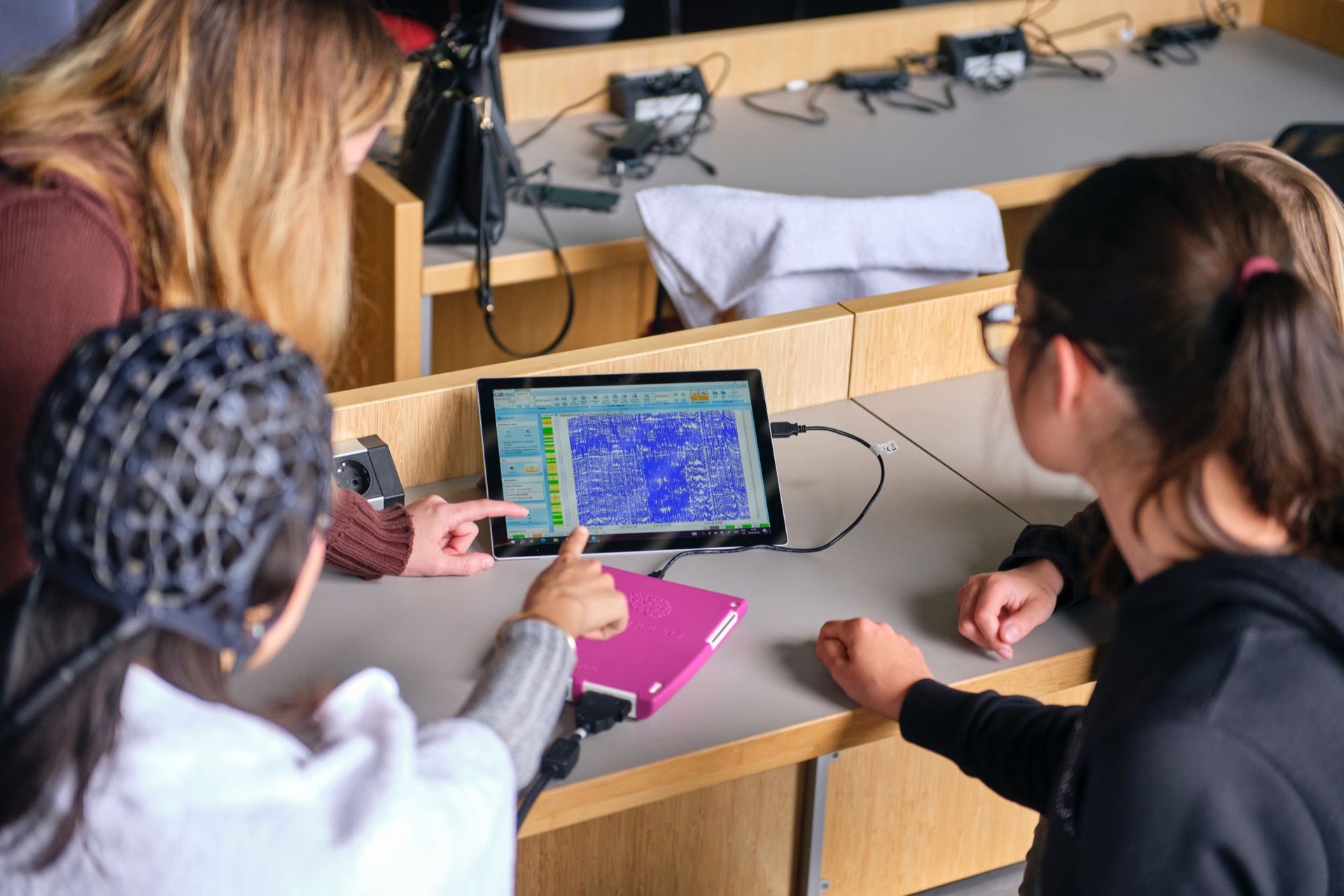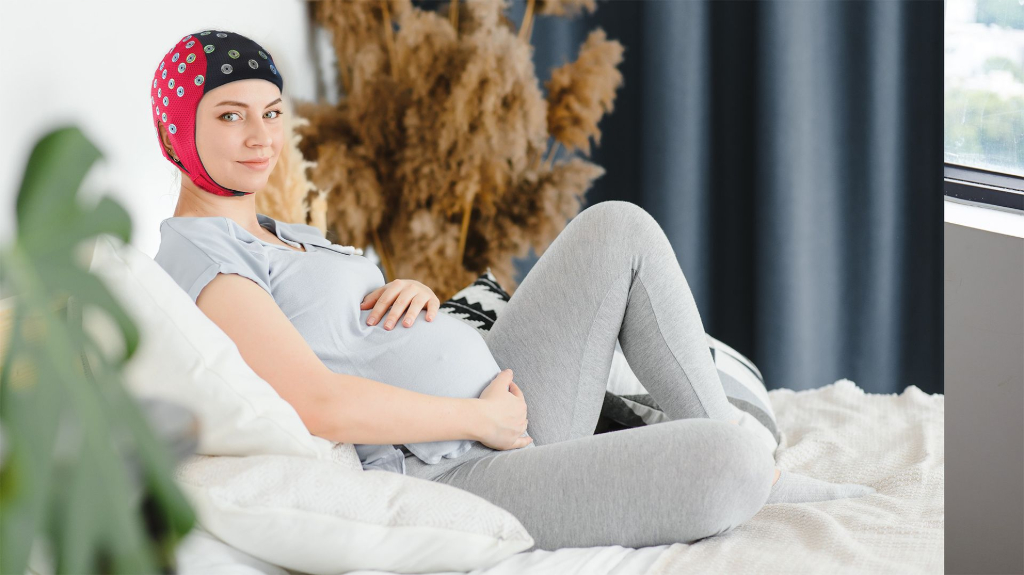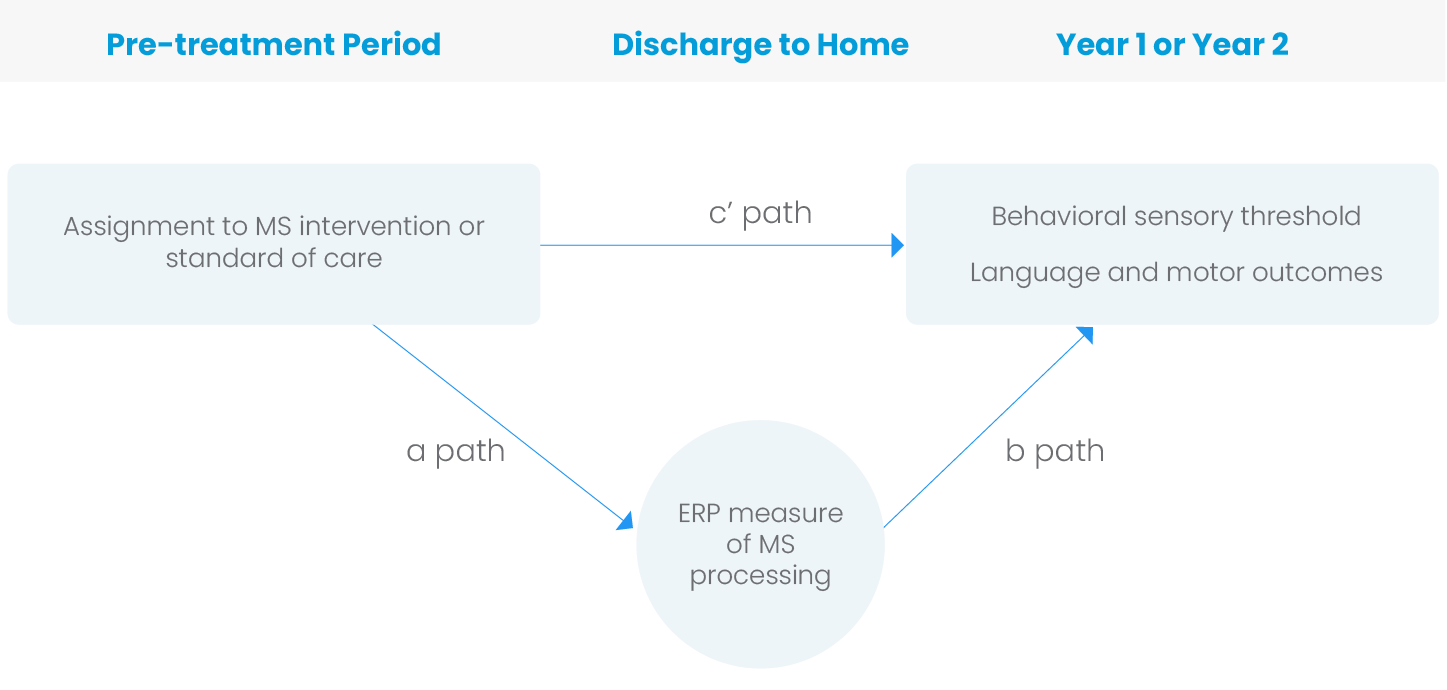By way of examples, Prof. Micah Murray’s research work makes use of high-density EEG data to alleviate the quality of life of mothers and improve our understanding of the consequences of preterm birth on sensory and cognitive development both during infancy and longitudinally through the adolescence of these children.
Contents
Meet the Researcher Research Work MELD Consortium The FOODY Brain Study: A prospective observational study in women during pregnancy and post-partum periods Improving multisensory neural processing, language and motor outcomes in preterm infants Variability and sensory integration in children affected by ADHD System Setup The future of High Density EEG Collaborations External links
Meet the Researcher

Prof. Micah M. Murray is a cognitive neuroscientist and a thought leader in neuroimaging methods, event related potentials (ERPs) and multisensory processes. As of August 2021, he is the founding Scientific and Academic Director at The Sense Innovation and Research Center in Lausanne and Sion, Switzerland. Since 2003, Prof. Murray has held a faculty position at the Lausanne University Hospital and University of Lausanne, Switzerland (CHUV-UNIL). He is currently a full professor at CHUV-UNIL.

Prof. Murray trained in the USA at The Johns Hopkins University and subsequently at The Albert Einstein College of Medicine, where he received his PhD in neuroscience with honors. He then completed a post-doctoral fellowship at the University Hospital and University of Geneva, Switzerland. Since 2008, he holds an adjunct position at Vanderbilt University. He currently holds numerous editorial positions in Brain Topography, Neuropsychologia, and Current Biology. Throughout his prolific career to-date, Prof. Murray has received several prestigious awards and grants in recognition of his work.
Research Work
His research focuses on brain imaging and mapping methods, the applications of which extend to both health and disease related investigations. By way of examples, Prof. Micah Murray’s research work makes use of high-density EEG data to alleviate the quality of life of mothers and improve our understanding of the consequences of preterm birth on sensory and cognitive development both during infancy and longitudinally through the adolescence of these children. In parallel, his work is increasingly focusing on long-term sequalae of premature birth as well as better understanding neurodevelopmental disorders.
MELD Consortium
Multisensory Environments for Longitudinal Development
This international consortium aims to understand multisensory development in children both in the lab and in real-world contexts. MELD unites the expertise in multisensory processes and child development from leading academic institutions. It is coordinated by Professor Mark Wallace (Vanderbilt University, USA) and includes Professors David Lewkowicz and Nick Turk-Browne of Yale University (USA), Professor Monica Gori of The Italian Institute of Technology (Italy), and Professor Micah Murray of The Lausanne University Hospital and University of Lausanne (Switzerland). Their ambitious goal is to fill the knowledge gap on how children develop their ability to appropriately combine (and segregate when necessary) information coming from the different senses. This longitudinal study will include a diverse group of children, including those representing the neurodivergent spectrum and coming from backgrounds traditionally underrepresented in research. This will represent the first true characterization of multisensory development.
An integral component of this research will be the acquisition and analysis of high-density EEG data from children in naturalistic settings. The consortium will propel research out of the laboratory and into everyday environments where these multisensory processes are truly put into practice. It also holds promises of significant impacts in applied, clinical, and educational fields. A further ambition will be to render the data from this consortium accessible for continued use by the scientific community.
The FOODY brain study: A prospective observational study in women during pregnancy and post-partum periods
Collaboration with Prof. Jardena Puder, CHUV-UNIL
Food cravings and emotional eating in the absence of hunger is common in pregnant women, leading to excessive weight gain and adverse effects on metabolic health as well as gestational diabetes mellitus (GDM). Studies show that women with GDM can exhibit poorer mental health, further contributing to dysregulated eating behavior. In this study, the subject pool consisted of 20 women with GDM and 20 without GDM that have valid primary outcomes such as high-density EEG viewing responses specifically to images of food with varying fat and carbohydrate content. These responses were recorded during their pregnancy (visit 1) and in the post-partum phase (visit 2). Visual evoked potentials (VEPs) were compared between visit 1 and visit 2 in the same woman and between women with and without GDM. Weight, glycated haemoglobin (HbA1c), glucose measures during the two visits (the latter only in women with GDM) and body composition (fat/lean mass) were secondary outcomes evaluated through self-reported and validated questionnaires related to eating behavior and mental health.

Other measures include self-reported stress levels as well. During snack sessions, the Auracle was used as an objective measure of eating behavior as it measured vibrations generated from movement, chewing and teeth grinding. The results provide novel evidence to encourage future interventions to reduce the adverse metabolic outcomes in the post-partum period.
Improving multisensory neural processing, language and motor outcomes in preterm infants
Collaboration with Prof. Nathalie Maitre, Emory University
Altered sensory development due to brain immaturity during birth, can lead to complex developmental processes in premature infants. This randomized controlled trial enrolled preterm infants at 32-26 weeks postmenstrual age to standard care or standard care plus multisensory intervention. 100 preterm infants were added to each group to understand the effect of both kinds of interventions. As part of the standard care, both groups were exposed to non-contingent recordings of their parent’s voice for 20 minutes during two to three daily sessions as well as skin to skin (STS) holding. During STS holding, the infant’s vital signs such as heart rate, breathing pattern and rate, oxygen saturation and temperature were continuously monitored. The multisensory group received tactile stimulation, auditory stimulation and olfactory stimulation as well as vestibular stimulation. The primary outcome of this study was brain-based measures of multisensory processing using time-locked EEG. Secondary measures include sensory adaptation, tactile processing, speech-sound differentiation, motor and language function which were measured at one and two years corrected gestational age. This study was one of the first of its kind to employ EEG measurements to show the causal effects of multisensory intervention on neural processing changes to mediate neurodevelopmental outcomes.
 Figure 1: Mediation analysis model used in the study [2]
Figure 1: Mediation analysis model used in the study [2]
Variability and sensory integration in children affected by ADHD
Collaboration with Prof. Kerstin Plessen, CHUV-UNIL
In this collaboration, high density EEG data was collected from 6-12 year-old children with ADHD and a healthy control group. Each child was recorded both at the start of the school year and at its end. During the recordings, the children completed a multisensory version of a Go/NoGo task involving unisensory visual or auditory stimuli as well as simultaneous multisensory auditory-visual stimuli. The study not only focuses on understanding intra-individual variability in sensory processes, but also how such might cascade to altered executive functions and movement habits as measured via at-home actigraphy.
System Setup
In all the projects highlighted in this showcase, high density EEG plays a crucial role in allowing us to study a population on whom other neuroimaging methods such as fMRI cannot be readily applied. For example, pregnant women cannot be scanned without a medical need, and it would be easier to put both infants and growing children under an EEG headset without causing them discomfort. The portability and mobility provided by EEG systems, makes it more applicable to all subject groups and age ranges. In most of the above projects, high-density EEG data was recorded using either a 64 or 128 channel waveguard™ original EEG headset in the (extended) 10/20 layout. The headsets were interfaced with the eego™ amplifier and all data was recorded using the eego™ acquisition software. ANT Neuro looks forward to witnessing the use of waveguard™ nets as well for the subject groups mentioned in this showcase.
The future of High Density EEG
One major added value of high-density EEG is the ability to perform analyses that are clinically meaningful. For one, there is a need to move away from analysis pipelines that are reference-dependent and that can yield neurophysiologically ambiguous interpretations. With 100 years of EEG now behind us, it behooves the community of EEG users to put into routine practice those analytics that serve the clinical and research communities alike.
In my experience, high-density EEG has been invaluable in better understanding a wide range of sensory, cognitive, and clinical functions. Researchers interested in streamlining or minimizing their montage should, in my view, first conduct the necessary research with high-density coverage to sufficiently understand the underlying neurobiological processes so as to be certain that a lower-density montage is indeed capturing their assumed processes.
Currently, EEG clearly has strong advantages in terms of accessibility to participants. These can range from neonates to the elderly and from individuals moving to individuals confined to a clinical bed. That said, we still need to improve the rapidity of our measurements and the turnaround time for our analyses. Likewise, we have to continue efforts to render data shareable and replicable; challenges that are by no means unique to the EEG community.
I a priori cannot state a strong preference as much as bearing in mind the comfort of the participants alongside the duration of the experiment. While EEG is highly accessible, as I describe above, it still requires a good deal of interaction with the participant to retain high signal quality throughout the recording. Such factors must inform the type of electrodes one uses.
I think innovations in material sciences and electronics will continue to compel us to reconsider. Whether it be saline nets, dry electrodes, or even “painted” electrodes, we as scientists need to remain skeptically open-minded.
In Collaboration with

External links

Randomized controlled trial protocol to improve multisensory neural processing, language and motor outcomes in preterm infants
by Mary Lauren Neel et al. in BMC Pediatrics.
Read More
Brain responses to food viewing in women during pregnancy and post partum and their relationship with metabolic health: study protocol for the FOODY Brain Study
by Anna Lesniara-Stachon et al. in BMJ Open.
Read More